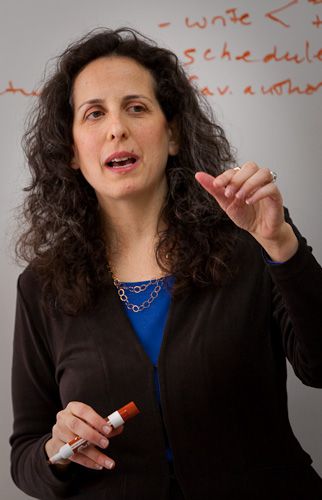 I’m currently working with a woman who is writing for social change and who has built a strong activist community. She has a big vision–a horizon far beyond what her community can currently envision.
I’m currently working with a woman who is writing for social change and who has built a strong activist community. She has a big vision–a horizon far beyond what her community can currently envision.
She wants to encourage them to the next level of activism in her book—and to expand how most of them currently view the social change issues she writes about.
How do you do that? How to get people from point A to point C, when most of them are not making the A to C connection? Can you make your reader grow beyond their current vision?
Don’t Make the Book About C
You want to have an impact. First you have to get the book into their hands. And then you need to get them to read it.
If you make the book about C and your social change community wants B, you lose the opportunity to influence the majority of your community through your book. Your potential readers probably won’t buy the book if it’s not promising what they want. They may not even realize this book is for them! The very book they’ve been aching for.
Instead, meet your readers where they are.
You meet them at point A! You promise what they are looking for when they are standing at the edge of point A and looking to reach point B. And then you walk them from point A to point B, the place where they want to go! Perhaps seeding a little bit for point C along the way. Deliver what they want.
Now Your Reader is Ready for Greater Social Change and the Bigger Picture
 In the final chapters, you stand with your social change readers at point B and point a finger towards point C. “Look! Over there!”
In the final chapters, you stand with your social change readers at point B and point a finger towards point C. “Look! Over there!”
Hold their hands and offer to take them to point C.
Some of them won’t want to go to C. They bought the book for B. That’s okay. Not everybody has to follow you to the end.
Here’s the beautiful thing. At point B, many a reader may not be quite the same person who picked up the book at point A. He or she will have changed, transformed by your book! Many of your readers will have shifted enough that now they’re ready to be led to point C. The final few chapters can take them to C.
In a nutshell, when you know your core readers are really looking for B, make the promise about B. Make the title and subtitle about B. Focus on getting from A to B, and then, from a new perspective, you can point to the new horizon and take them there, when your readers are ready.
What questions or challenges do you have when it comes to writing about social change? Or what insights can you share?

 While speaking with a client about her audience, I had a sense that the audience for her book was different from the audience for the high-end program she was developing.
While speaking with a client about her audience, I had a sense that the audience for her book was different from the audience for the high-end program she was developing. For more help in clarifying your vision, goals, audience, as well as the content, tone, structure and features of your book, consider my self-study program, Quick Start to Kick Start Your book.
For more help in clarifying your vision, goals, audience, as well as the content, tone, structure and features of your book, consider my self-study program, Quick Start to Kick Start Your book. When I emailed, “What do you want to discuss on our call?” all my client wrote was, “How to write a book.”
When I emailed, “What do you want to discuss on our call?” all my client wrote was, “How to write a book.” I asked him the number of words he’s committed to and to remind me the number of chapters he needs to write:
I asked him the number of words he’s committed to and to remind me the number of chapters he needs to write: I suggested that he come up with a list of all the questions he has for his editor. Rather than ask her for her vision, he should start with his vision, so that she’s more likely to be on the same page. Some of my suggestions included:
I suggested that he come up with a list of all the questions he has for his editor. Rather than ask her for her vision, he should start with his vision, so that she’s more likely to be on the same page. Some of my suggestions included:
 Have you been thinking it will take forever to write a book?
Have you been thinking it will take forever to write a book? A client of mine received a wonderful nudge from the universe a few days ago. She’d been writing her first few blog posts, but hadn’t posted any yet.
A client of mine received a wonderful nudge from the universe a few days ago. She’d been writing her first few blog posts, but hadn’t posted any yet. My husband Tom Patterson is an
My husband Tom Patterson is an  The benefit of having your name as the URL/link is that no matter how your writing/speaking/consulting/coaching career changes, you can update your website to reflect your current direction and the URL is as relevant as ever.
The benefit of having your name as the URL/link is that no matter how your writing/speaking/consulting/coaching career changes, you can update your website to reflect your current direction and the URL is as relevant as ever.